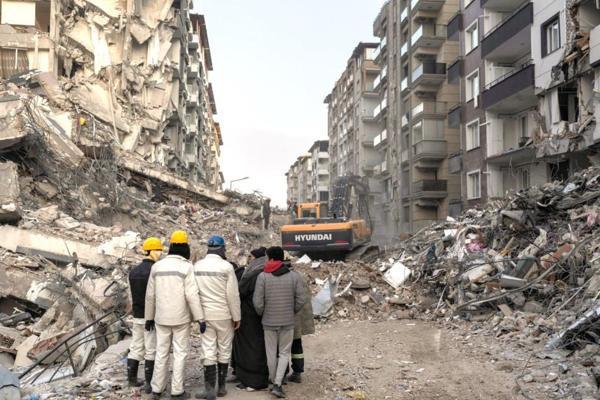Only 5 pct of collapsed buildings in line with regulation: Experts
KAHRAMANMARAŞ


Only 5 percent of the buildings destroyed in the Feb. 6’s deadly quakes that struck the southern province of Kahramanmaraş were built as per the earthquake regulations, say academics, who were appointed experts by the Kahramanmaraş Chief Prosecutor’s Office and conducted investigations into the earthquake zone.
Engineer Bora Akşar, one of the experts on the team, emphasized that the concrete quality of collapsed buildings in Kahramanmaraş was extremely poor.
“The concrete quality and craftmanship are inadequate. We observed that smooth surface stones, known as stream gravel, were used instead of crushed stones,” Akşar explained.
Akşar also pointed out that there are workmanship and manufacturing defects, especially in main structural elements such as columns and beams.
Another expert Önder Umut stated that if buildings were built in accordance with all the requirements of the building production process, the chances of them getting damaged were still high, but they would not have collapsed.
Accordingly, the team reported that only 5 percent of the collapsed structures in the province were built in accordance with earthquake regulations.
‘Iron split like crackers’
Another team examining collapsed and heavily damaged structures pointed out unusual characteristics of construction irons.
When the team started to examine the damage caused and took the photos, it noticed that some construction irons were not damaged in the usual way, stated Başak Boduroğlu Yazıcı, the head of the team.
“We photographed every single damage we saw. We noticed that some rebars did not break as they should. When an excessive load is placed on normal construction irons, like in an earthquake, they first thin out and then break off,“ Yazıcı explained.
“However, we observed in some wrecks and damage sites that the iron did not behave in the way it should have. It split in half like crackers,” she expressed.
After interviewing with some contractor companies and workers in the region, Yazıcı said they learned that this poor quality of iron found in some buildings came from other countries or was recycled from scrap.
When the team asked workers if they noticed something odd about the iron they used, the workers said that some iron bars broke even during material handling.
“There were even some contractors who returned these irons for these reasons,” she noted.
Yazıcı also stated that they tested the samples collected from the region, adding that the samples could not pass the tests during the examination they conducted with a team comprising of other civil engineers from Uludağ University.
“Our aim was to investigate the causes of the damage. Of course, there is no single reason for these destructions. There are many troublesome situations. In addition to poor quality material and problems in manufacturing and design flaws, there were also some newly built structures where even ground surveys were not conducted,” she said.
